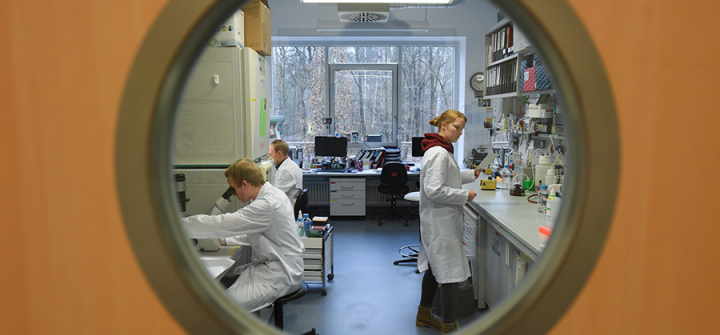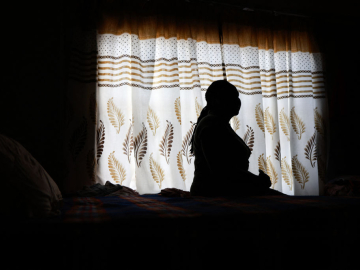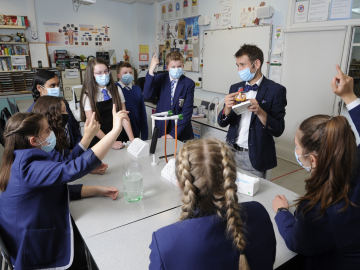In COVID-19 Research, the Need for Speed… and Accuracy
Early in the COVID-19 pandemic, a group of US scientists made a major discovery. They figured out the molecular structure of the “spike protein” that the SARS-CoV-2 virus uses to invade human cells.
The researchers were eager to share the news that could help develop potential vaccines and drugs. Although the usual scientific publication process from submission to publication is measured in months, the spike paper blazed through it in 9 days and was published online in Science on February 19—“which is incredible,” says Sudip Parikh, PhD, CEO of the AAAS and executive publisher of the Science family of journals. He remembers telling reviewers to drop everything in order to expedite the process.
As COVID-19 continues to burn through the populations worldwide, biological, epidemiological and other insights are informing public health strategies and policies in real time. New research can mean lives saved.
For example, a recent Chinese study in Nature that supported the use of face masks by the general public appears to have influenced policy in the US. And Parikh notes that modeling studies conducted at Harvard, Columbia, Northeastern University, and Imperial College of London profoundly influenced the pandemic response by prompting the adoption of social distancing measures across the U.S. and Europe.
“If my mom knows about flattening the curve, we’ve struck something,” he says.
In addition to those studies, scientists have produced an astounding 17,000+ COVID-19 research articles listed in a CDC database.
But does speed have a price in accuracy?
Not in the case of the spike paper, Parikh says. The reviewers who examined the research held it to their usual rigorous standards but accelerated the pace because of the study’s importance.
Parikh admits that kind of speed isn’t always possible. Scientific journals don’t have enough bandwidth to publish everything they see that quickly while maintaining their traditional standards. But they can do so in a targeted way to get the most important work out the door without delay, he says.
The challenge, he says, lies in curating the flood of material being produced and publishing the most significant work as quickly as possible.
Overall, Parikh says he doesn’t see a decline in the quality of the research being submitted to peer-reviewed outlets—though studies appearing on preprint servers without peer review may be suspect. (Peer review, which traces its roots back 3 centuries, involves the close study of a paper’s merits and flaws by experts in the field. Preprint articles are draft articles that haven’t yet been peer reviewed.) “There’s probably a lot of stuff out there that will need to be corrected,” says Parikh, who is nonetheless amazed by how quickly labs around the world have pivoted to produce high-quality coronavirus research.
Sander Greenland, DrPH, a professor emeritus of Epidemiology and Statistics at UCLA, thinks the question of whether research conducted under crisis conditions can be trusted may be misplaced: Studies have limitations even under the best of circumstances, and reliability is always a matter of degree.
“Every study is flawed. The question is, what can you get out of it, and for what purpose?” he says.
At the moment, Greenland says, the lack of certain kinds of data may represent the principal challenge to an effective pandemic response. Researchers need to know the false positive and negative rates of the tests used to identify infected individuals, for example, in order to understand how prevalent COVID-19 really is—and what the true fatality rate might be. But test manufacturers are not necessarily supplying that data.
Similarly, doctors need to know exactly how many patients diagnosed with COVID-19 are dying due to underlying conditions or complications from co-infections in order to understand how virulent the virus really is and who most needs protection from it. But that data is not being systematically collected and reported.
Without that information, Greenland says, scientists and policymakers are left to make educated guesses about everything from infection rates to control measures.
“It’s like trying to predict where the stock market is going to be in 3 months,” he says. Better data collection and reporting would help resolve these issues, Greenland notes.
Then again, researchers are used to dealing with incomplete data during epidemics, pandemics, and outbreaks.
“There is always a paucity of data under these conditions,” says Stephen Morse, PhD, an infectious disease epidemiologist at Columbia University’s Mailman School of Public Health. Testing tends to be highly selective, for example, and random samples are hard to come by.
But math can help researchers deal with gaps in their data. For instance, Morse points out that epidemiologists have developed a variety of statistical methods for estimating the values of missing data—a process known as imputation.
And valuable work can still be done using traditional epidemiological methods such as contact tracing: In Singapore, Morse notes, contract tracers used a new antibody test to identify previously unidentified chains of transmission—an important step in containing the virus.
Moving forward, Morse hopes the current crisis will motivate researchers to finally put in place “things we have thought and talked about but never implemented,” such as better early surveillance and rapid diagnostic tests to help contain future outbreaks.
For his part, Parikh believes that some of what scientists have already learned about operating during the pandemic—from streamlining the review process to adopting virtual clinical trials that allow researchers to collect participant data remotely without having people appear at clinic sites—will provide lasting benefits long after the crisis is over.
“I think we’re going to think of this as BC and AC,” he says. “Before coronavirus and after coronavirus.”
For the latest, most reliable COVID-19 insights from some of the world’s most respected global health experts, see Global Health NOW’s COVID-19 Expert Reality Check.
Join the tens of thousands of subscribers who rely on Global Health NOW summaries and exclusive articles for the latest public health news. Sign up for our free weekday newsletter, and please share the link with friends and colleagues: https://www.globalhealthnow.org/subscribe
Researchers at Philipps University of Marburg in Germany are developing a vaccine against SARS-CoV-2. Image: Arne Dedert/dpa/Getty




